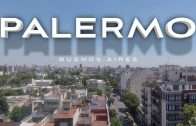La Recoleta Cemetery
The first public cemetery on the city of Buenos Aires, La Recoleta Cemetery is the most relevant historical and artistic monument of Argentina.
La Recoleta Cemetery is located in the Recoleta neighbourhood of Buenos Aires, Argentina. It contains the graves of notable people, including Eva Perón, presidents of Argentina, Nobel Prize winners, the founder of the Argentine Navy, and a granddaughter of Napoleon.
Inaugurated on 17 November 1822 under the name of Cementerio del Norte (Northern Cemetery), the site contains 4691 vaults, of which 94 have been declared National Historical Monuments by the Argentine government and are protected by the state. The first two burials were a black freed boy, Juan Benito, and a young lady called Maria Dolores Maciel.
The entrance to the cemetery is through neo-classical gates with tall Doric columns. The cemetery contains many elaborate marble mausoleums, decorated with statues, in a wide variety of architectural styles such as Art Deco, Art Nouveau, Baroque, and Neo-Gothic, and most materials used between 1880 and 1930 in the construction of tombs were imported from Paris and Milan. The entire cemetery is laid out in sections like city blocks, with wide tree-lined main walkways branching into sidewalks filled with mausoleums.
The monks of the Order of the Recoletos arrived in this area, then the outskirts of Buenos Aires, in the early eighteenth century. The cemetery is built around their convent and a church, Our Lady of Pilar (Iglesia de Nuestra Señora del Pilar), built in 1732. The order was disbanded in 1822, and the garden of the convent was converted into the first public cemetery in Buenos Aires. Those responsible for its creation were the then-Governor Martin Rodríguez, who would be eventually buried in the cemetery, and government minister Bernardino Rivadavia. The 1822 layout was done by French civil engineer Próspero Catelin, who also designed the current facade of the Buenos Aires Metropolitan Cathedral. The entrance was remodeled in Greek Doric style without base in 1881, while Torcuato de Alvear was mayor of the city, by the Italian architect Juan Antonio Buschiazzo.
Relevant players of Argentine history rest in La Recoleta: politicians, military men, statesmen, explorers, priests, leaders, writers and poets lie there in silent testimony, honoured today by the presence of thousands of Argentine and foreign visitors who enjoy a truly magnificent human creation.
5 Tombs to Visit in La Recoleta Cemetery
Entrance to the cemetery is free, and is open 7 a.m. to 6 p.m. every day.









